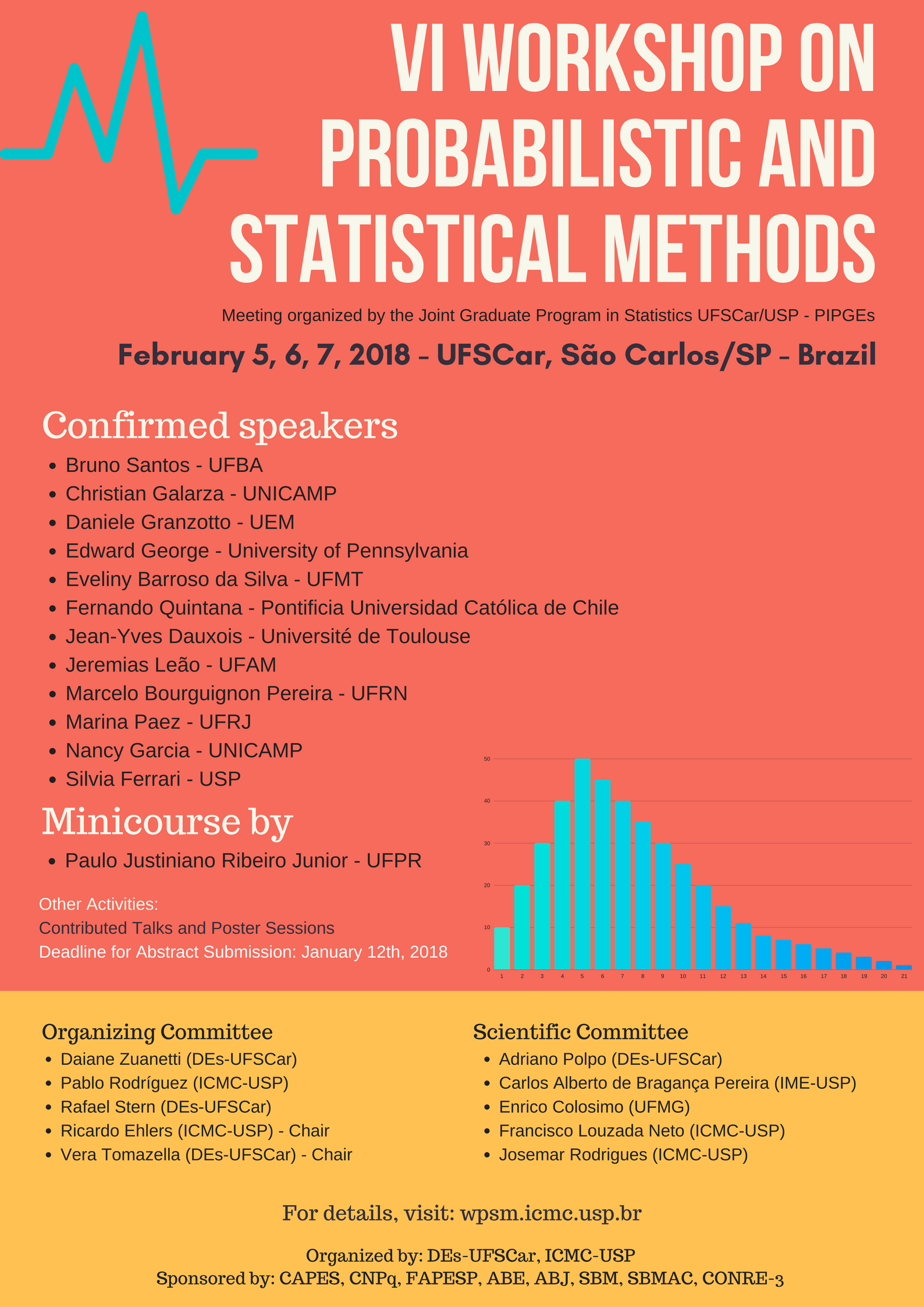VII Workshop on Probabilistic and Statistical Methods
February 13, 14, 15, 2019 - ICMC-USP - São Carlos - SP - Brazil
Auditório Fernão Stella de Rodrigues Germano
Bloco-6 Térreo, Sala 6-001
VII Workshop on Probabilistic and Statistical Methods
February 13, 14, 15, 2019 - ICMC-USP - São Carlos - SP - Brazil
Auditório Fernão Stella de Rodrigues Germano
Bloco-6 Térreo, Sala 6-001








